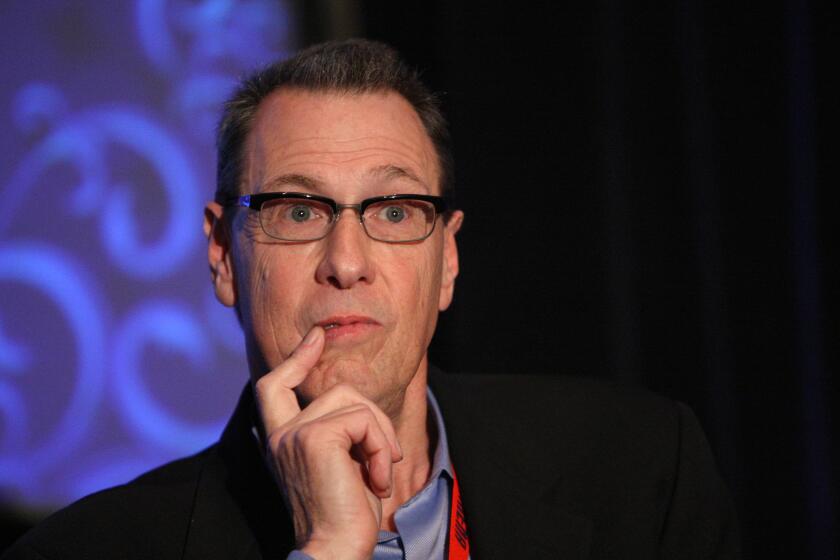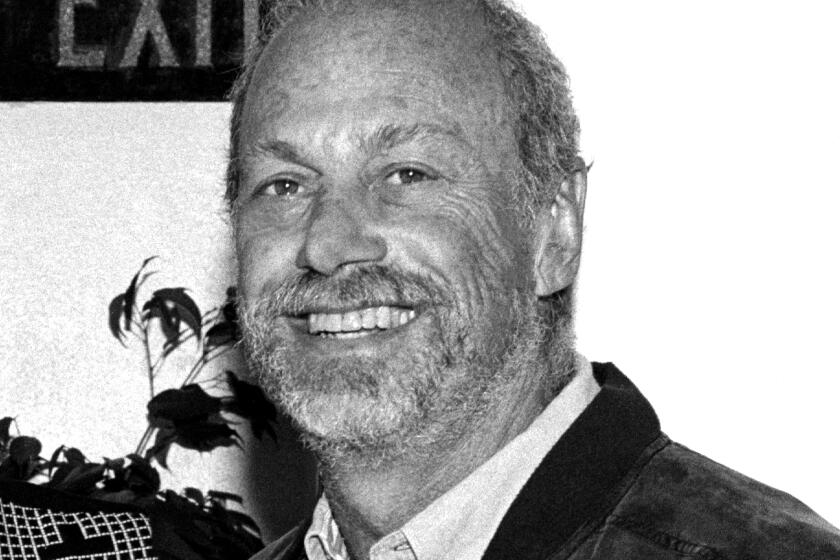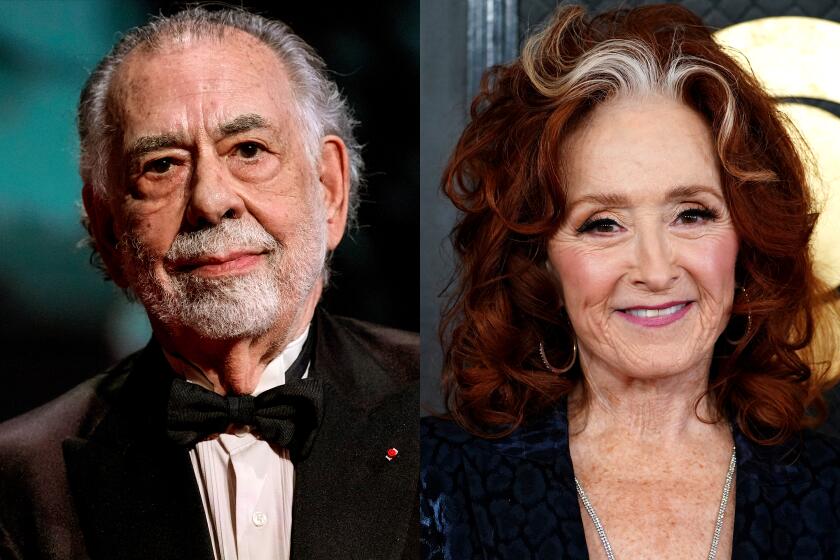Surveys seem to conflict
Which is correct?: (a) Americans love radio and say it gives them everything they want and need, or (b) they’re fed up with homogenized radio playlists and yearn for more diversity.
Well, it’s both, according to dueling studies released recently by the National Assn. of Broadcasters and by a nonprofit advocacy group, the results of which seem to jibe perfectly with the aims of the organizations behind them.
Earlier this week, the National Assn. of Broadcasters, the trade group of the nation’s 13,000 radio stations, published the findings of a poll it commissioned of 1,000 Americans. And the results are bound to please membership: 65% of those surveyed are satisfied with the job their local radio stations are doing, and 78% “believe that radio stations play an important role providing news and information their community.”
In addition, reported pollster Mark Mellman, president of the Mellman Group, Americans “believe radio provides them with the music they want to hear.”
Among those surveyed, 56% said their favorite local radio stations “play the music they like at least most of the time,” while only 13% said local stations play their preferred music rarely or never. And only 17% of respondents said that radio stations are providing less variety than they were five years ago, while 29% said it was more variety and 21% said it is about the same.
Those results fly in the face of a report released six weeks ago by the Future of Music Coalition, a group of musicians, independent record executives and consumer advocates, which said that the consolidation of ownership among radio stations in the United States has shrunk the variety of programming. Their report said that two companies now control 42% of the nation’s radio listeners, and that even though more music formats are available now, the differences between them are so slight that they duplicate many of the same songs.
“Radio consolidation has resulted in less variety of music being played on the radio, shorter playlists, homogenization of playlists, and less local music being broadcast,” the coalition said.
A survey that the group commissioned earlier in the year, and included in the November report, said that of the 500 people polled, 52% said “radio would be more appealing to them if it offered more new music, less repetition and more music of local bands and artists.” And six out of seven respondents expressed preference for “a long, rather than a short, playlist that provides them a greater variety of songs and less repetition during the week.”
At the time, the National Assn. of Broadcasters contested the findings of the report, saying its methodologies were flawed and that it was skewed against broadcasters. The coalition barked back, citing surveys claiming that radio listenership has declined, and challenging the association’s assertions, saying, “it’s not surprising that an industry-conducted survey found results favorable to the industry.”
*
KCSN asks to boost its signal
Among the Southland’s choices of public-radio stations -- news and eclectic music on KCRW-FM (89.9), jazz on KKJZ-FM (88.1), news and talk on KPCC-FM (89.3) and classical music on KUSC-FM (91.5) -- often overlooked is KCSN-FM (88.5), the station of California State University, Northridge.
Though not quite the poor stepchild, said Fred Johnson, the station’s interim general manager, “we’re kind of the scrappy little brother.”
Well, now the little brother is ready to move off-campus. He’s nearly 40, after all. KCSN has petitioned the Federal Communications Commission to boost its broadcast signal, in an attempt to get beyond its San Fernando Valley base and reach listeners over the hill.
“We’ll be able to hit the whole Westside, Malibu, Los Feliz, Silver Lake,” Johnson said, and “pick up maybe a couple million more potential listeners, if we’re lucky.”
The turf already belongs to the station; the “footprint” of its broadcasting area was decreed by the FCC when the station started in 1963. Now it’s just a matter of boosting the signal to fill the geography that KCSN is entitled to, he said.
Johnson said they won’t be able to go any farther south than the Santa Monica Freeway, or they’ll risk interfering with KKJZ. He searched rooftops for a month looking for the right location for a booster antenna, atop a building at Pico Boulevard and Bundy Avenue. The expanded coverage area will make the station more attractive to underwriting sponsors, Johnson said. And though the upgrade will cost the station about $20,000, he’s hopeful it will recoup the expense in the first pledge drive heard by the new listeners -- if they enjoy the alternative that calls itself “The Very Best of Public Radio.”
The bulk of the station’s schedule features classical music, like so many other college-based public stations around the country. But beneath that veneer is a broad variety of programming, including some music genres found nowhere else in the Southland. The station features two different bluegrass programs on the weekends, for example, and also features shows playing classic country, cowboy and American roots music. The station also features programs devoted to the Grateful Dead, Frank Zappa, Broadway show tunes, surf music, the British invasion and recordings by various performers and ensembles from the university’s music department.
It’s also the latest home of “The Swingin’ Years,” Chuck Cecil’s 46-year-old program on Big Band music.
The FCC accepted KCSN’s petition last Friday. Now anyone opposed to the action has to tell the agency by Jan. 27. Johnson said he doesn’t expect any interference from stations close-by on the dial, like KKJZ, or his fellow public-radio outlets.
“I don’t see us as competing with them,” he said. “We’re going to sweeten the sound of public radio in L.A., hopefully.”
But KCSN has already seen the other side of this fence. When KSBR, the radio station of Saddleback Community College in Mission Viejo, also at 88.5 FM, sought to boost its signal in 1993, KCSN and other stations with adjacent frequencies protested. The FCC eventually denied the request, citing excessive overlap with the other outlets.
More to Read
The biggest entertainment stories
Get our big stories about Hollywood, film, television, music, arts, culture and more right in your inbox as soon as they publish.
You may occasionally receive promotional content from the Los Angeles Times.






